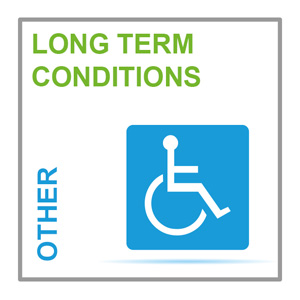RENAL DISEASEACUTE KIDNEY INJURYAcute kidney injury (AKI) is a clinical syndrome characterised by a decline in renal excretory function over hours or days that can result in failure to maintain, fluid, electrolyte and acid-base balance. The term has replaced the concept of acute renal failure because it more accurately describes the state of the kidneys before function fails. AKI arises as a result of decreased glomerular filtration rate; structural damage to the kidney; acute obstruction of urinary flow. Pre-renal causes include hypovolaemia, reduced cardiac output and drugs that reduce blood pressure, circulating volume or renal blood flow, e.g. ACE inhibitors, ARBs, NSAIDs, loop diuretics. Post-renal causes include obstruction such as renal stones, blocked catheter, enlarged prostate or genitourinary malignancy. Management depends on the stage of AKI and if there are features requiring hospital admission, same-day referral or specialist input. Renal function should be monitored regularly in people with chronic kidney disease, heart failure, liver disease, and diabetes. Review regular medication, and where possible, avoid potentially nephrotoxic drugs, and adjusting the dose of other medication according to renal function. NICE CKS. Acute kidney injury; 2021. https://cks.nice.org.uk/topics/acute-kidney-injury/
NICE NG148. Acute kidney injury: prevention, detection and management. https://www.nice.org.uk/guidance/ng148
CHRONIC KIDNEY DISEASECKD is a long-term condition in which waste products normally removed by the kidneys remain in the blood. A person with CKD is at increased risk of heart attack or stroke, especially if they smoke or are overweight. CKD affects about 1 in 10 of the UK population, and at age ≥75 years 1 in 2 because of normal ageing of kidneys. Fewer than 1 in 10 people with CKD ever require dialysis or a kidney transplant, but people with CKD should have regular checks of kidney function and blood pressure. In the UK, CKD is most often caused by diabetes (CKD is a common complication of diabetes), uncontrolled or poorly treated hypertension, or an age-related decline in kidney function. There are other less common causes. The focus of primary care management is cardiovascular risk reduction. Control of blood pressure, especially in individuals with proteinuria, reduces cardiovascular risk and slows progression of kidney disease, delaying the need for dialysis or transplantation.
NICE NG203 Chronic kidney disease: assessment and management; 2021 https://www.nice.org.uk/guidance/ng203
Patient. Chronic Kidney Disease, Professional reference; 2021 https://patient.info/doctor/chronic-kidney-disease-pro
UK Kidney Association https://www.kidney.org.uk
Practice Nurse featured article
Chronic kidney disease – an update Dr Mary Lowth
Practice Nurse Curriculum module
 Identifying and monitoring CKDDeclining kidney function is identified and quantified by 'estimated glomerular filtration rate' (eGFR). Monitoring is by a combination of: a) eGFR b) urine albumin:creatinine ratio (ACR), to detect proteinuria.
Screening for CKD NICE recommends screening for CKD (using eGFR and ACR) in people at risk because of:
CKD prevalence increases with age, and it is more common in females and some ethnic groups, but do not screen for CKD on the basis of age, sex or ethnicity alone. eGFR reporting has identified many people with CKD, most of whom are asymptomatic. Only a few will progress to end-stage renal disease, but all are at increased risk of CVD. Practical tips on measuring kidney function (NICE NG203)
Practical tips for measuring proteinuria
CKD review Every patient with CKD should be reviewed at least annually, depending on their condition, with recent blood results, urine test and BP reading, to:
Be aware of QOF indicators, and ensure correct application of Read codes. |
|